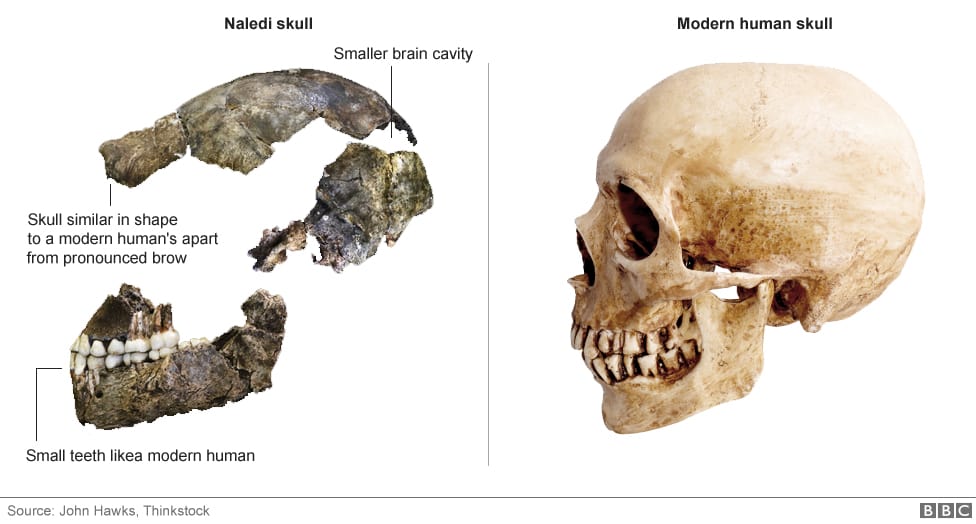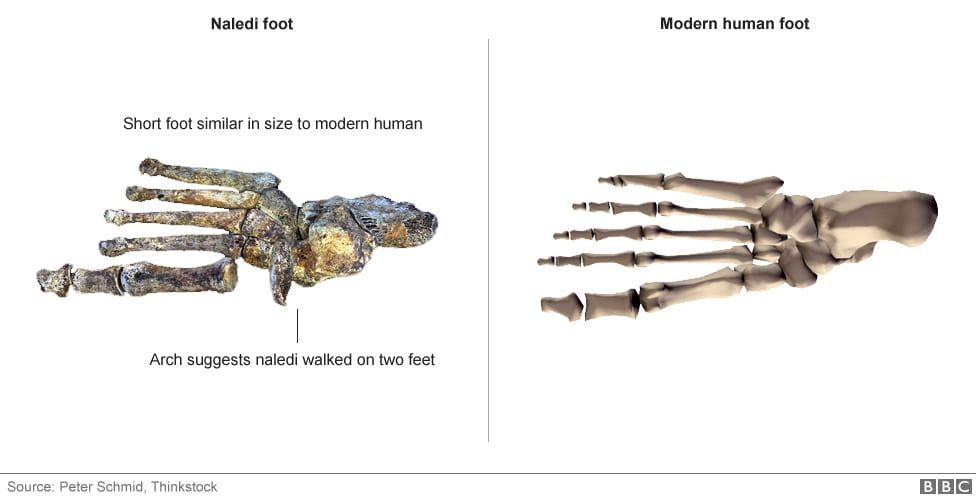A team of scientists have discovered yet another human species,”Homo naledi,” and this time it is located in South Africa, reports the BBC.
RELATED: NEW SPECIES OF HUMAN FOUND, THROWS OFF SCIENTISTS’ THEORY OF FIRST ANCESTOR
Keep Up With Face2Face Africa On Facebook!
After six scientists crawled through tunnels in the Rising Star cave — which is a part of the Cradle of Humankind, located about 40 kilometers from Johannesburg and home to 40 percent of the world’s human ancestor fossils — they reportedly came upon a chamber that had hundreds of bones.
Lead Scientist Prof. Lee Berger says of the experience, “We’d gone in with the idea of recovering one fossil. That turned into multiple fossils. That turned into the discovery of multiple skeletons and multiple individuals.
“And so by the end of that remarkable 21-day experience, we had discovered the largest assemblage of fossil human relatives ever discovered in the history of the continent of Africa. That was an extraordinary experience.”
Berger and his team found 15 partial skeletons, which is indeed the biggest single discovery on the continent.
Examining the Homo Naledi
While researchers still haven’t been able to determine exactly when they lived, Prof. Berger contends that they appear to be one of the earliest groups of humans and could have likely existed 3 million years ago.
About their characteristics, the BBC reports:
Homo naledi is unlike any primitive human found in Africa. It has a tiny brain – about the size of a gorilla’s and a primitive pelvis and shoulders. But it is put into the same genus as humans because of the more progressive shape of its skull, relatively small teeth, characteristic long legs and modern-looking feet.
As aforementioned, the naledi skull and teeth (pictured) are similar to the modern human skull, but their brain size is more similar to that of a gorilla’s.
As seen below, the naledi also have very similar hands as modern humans. Scientists say, though, that their fingers are more curved than ours.
The naledi‘s feet also present similarities to us; however, researchers say that their feet appear to be smaller.
Going in to the detail of one particular find, Prof. Berger says, “I was astonished to see how well preserved the bones were. The skull, teeth, and feet looked as if they belonged to a human child — even though the skeleton was that of an elderly female.”
As with every new human discovery, this find upends not only what scientists think it means to be human but also challenges scientists’ beliefs about our supposed ancestors’ capabilities.
For example, the fact that the naledi appear to have buried their dead together shoots down the premise that their brain size means that their intelligence levels were more on par with animals.
The Homo naledi people appear to have carried individuals deep in to the cave system and deposited them in the chamber – possibly over generations.
If that is correct, it suggests the naledi was capable of ritual behaviour and possibly symbolic thought – something that until now had only been associated with much later humans within the last 200,000 years.
Prof. Berger adds, “We are going to have to contemplate some very deep things about what it is to be human. Have we been wrong all along about this kind of behaviour that we thought was unique to modern humans?
“Did we inherit that behaviour from deep time and is it something that (the earliest humans) have always been able to do?”
This year has brought with it a number of discoveries: In March, an Ethiopian student found what is thought to be the oldest human being in history in Afar Regional State, Ethiopia; by May, researchers announced that they had located man’s oldest tools in Kenya’s Lake Turkana; and then later that month, yet another “new” species was found also in the Afar region of Ethiopia called “Australopithecus deyiremeda.”
Seeming to allude to these earlier discoveries, Prof. Berger theorizes, “What we are seeing is more and more species of creatures that suggests that nature was experimenting with how to evolve humans, thus giving rise to several different types of human-like creatures originating in parallel in different parts of Africa. Only one line eventually survived to give rise to us.”
RELATED:
OLDEST TOOLS FOUND IN KENYA, PREDATES PREVIOUS OLDEST TOOLS BY 700,000 YEARS














